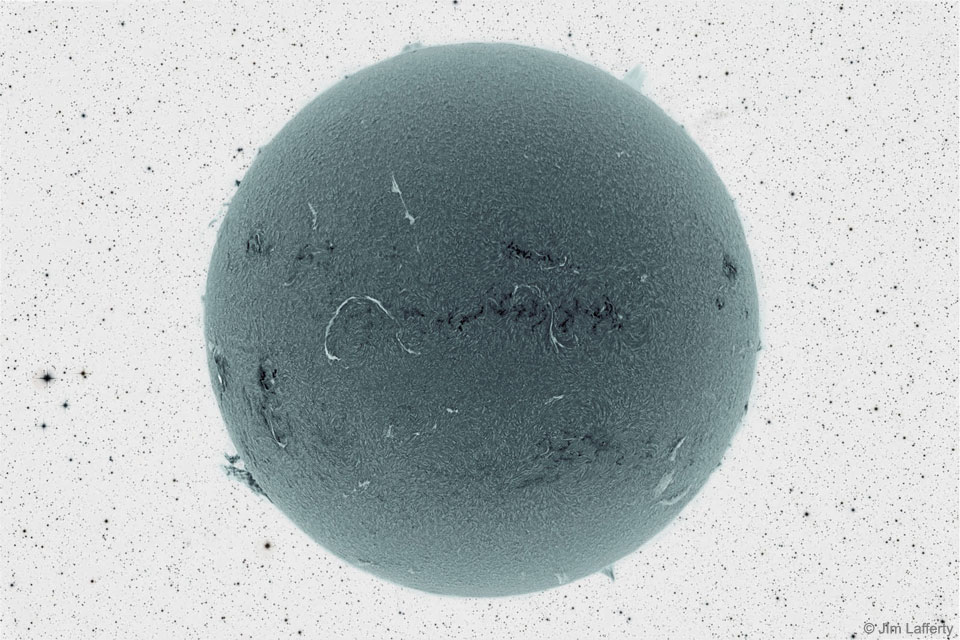2022年11月6日
Dark Ball in Inverted Starfield
Image Credit: Jim Lafferty
Explanation: Does this strange dark ball look somehow familiar? If so, that might be because it is our Sun. In the featured image from 2012, a detailed solar view was captured originally in a very specific color of red light, then rendered in black and white, and then color inverted. Once complete, the resulting image was added to a starfield, then also color inverted. Visible in the image of the Sun are long light filaments, dark active regions, prominences peeking around the edge, and a moving carpet of hot gas. The surface of our Sun can be a busy place, in particular during Solar Maximum, the time when its surface magnetic field is wound up the most. Besides an active Sun being so picturesque, the plasma expelled can also become picturesque when it impacts the Earth’s magnetosphere and creates auroras.
Compute it Yourself: Browse 2,900+ codes in the Astrophysics Source Code Library
Tomorrow’s picture: faded moon
反白星场里的暗色太阳
图像提供: Jim Lafferty
说明: 这颗怪异的暗球是否有点眼熟呢?没错,它就是我们的太阳。在这幅来自2012年的主题图像里,其中的细致太阳最原先是透过特定的红光滤镜所拍摄,然后转成黑白图像,最后再做色彩反转。而处理好的太阳图像,再与也是色彩反转的星场图像叠合。在太阳图像里,可以看到太阳表面上有长长的淡色暗条、黝黑的活跃区、边缘突起的日珥、以及像是在晃动的地毯状炽热气体。太阳表面可以是个很忙碌的地方,尤其是在表面磁场纠缠得特别利害的太阳极大期之时。除了活跃期的太阳很美丽之外,从太阳表面喷出的等离子,在冲撞击地球磁层时,也会产生美丽的极光。
自己计算: 浏览天体物理源代码库中的2,900多个代码
明日的图片: faded moon







